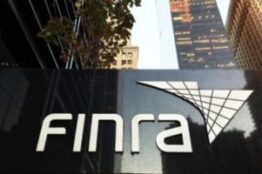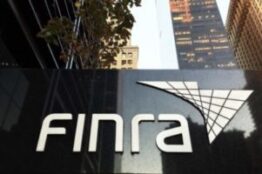
The Financial Industry Regulatory Authority (FINRA) has sanctioned Christine L. Cantone and her firm for their failure to supervise a broker who sold fictitious investments to customers through which he misappropriated over $1.6 million.
Cantone & Cantone Research Inc. Censored & Fined
Pursuant to an FINRA order dated Feb. 22 that accepted an offer of settlement, Cantone and her firm Cantone Research Inc. (CRI) were jointly-and-severally fined $10,000, and CRI was censured and fined $15,000.
Cantone and her firm were also ordered to pay a total of $200,000 in partial restitution to the customers who were defrauded by Maxwell Baldwin Smith, a former registered representative of CRI.
In addition, Cantone was suspended for three months from association with any FINRA member in a principal capacity.
FINRA’s Department of Enforcement filed the disciplinary action in August 2011. Five months later, Cantone and CRI submitted the offer of settlement through which they consented, without admitting or denying the allegations, to the entry of findings and violations, and to sanctions.
Christine L. Cantone & Cantone Research Inc’s Failures
CRI, a FINRA member since 1990, is a general securities business located in Tinton Falls, N.J. Cantone first registered with CRI in 1996, when she entered the securities business. At first a general securities representative, she later registered as a financial and operations principal and general securities principal, among other things.
Since 2001, Cantone has been CRI’s vice-president, chief compliance officer and financial and operations principal, the order said. She remains registered with the firm, according to FINRA public disclosure records.
By failing to establish and maintain an adequate supervisory system and failing to establish, maintain and enforce the proper supervisory procedures in writing, CRI violated Conduct Rules 3010 and 2110 of the National Association of Securities Dealers (NASD), a FINRA predecessor, as well as FINRA Rule 2010 concerning standard of commercial honor and principles of trade.
The firm had no supervisory system in place to monitor its brokers’ activity in outside brokerage accounts. Although CRI required these accounts to be disclosed, as well as duplicate statements to be collected and brokers to be questioned about suspicious transactions, the firm nonetheless failed to follow through regarding Maxwell Baldwin Smith’s activities, the order said. As a result, Smith was able to engage in his fraudulent scheme while registered with CRI.
As vice president and chief compliance officer of CRI, Cantone failed to reasonably supervise Smith, allowing him to continue to perpetrate his fraud despite the existence of numerous red flags that indicated misconduct, the order said. This failure to supervise also violated NASD Conduct Rules 3010 and 2110 and FINRA Rule 2010.
Maxwell Baldwin Smith’s Fraudulent Scheme
Smith, who first registered with FINRA in 1974, began to work for CRI in early 2005, but his fraudulent scheme began earlier. From 1992 through June 2008, Smith induced seven people, including at least four elderly investors, to sink more than $9 million in securities he labeled Health Care Financial Partnership Direct Loans (HCF).
Most of these seven fraud victims were CRI customers, including a 95-year-old customer identified in the order as LF who gave Smith about $8.6 million to invest. LF passed away shortly after the FINRA disciplinary action was filed, the order said.
While Smith was at CRI, he misappropriated a total of $1.6 million from CRI customers through his fraudulent HCF scam, the order said. Documents Smith gave to these customers described HCF as a company set up to invest in a diversified portfolio of high-yield, income producing projects like nursing homes and retirement centers for senior citizens.
The investments were made in the form of loans with terms of two to 30 years, the order said. Smith promised the customers interest ranging from 7.5 percent to 9 percent.
Smith kept materials on to the CRI clients that invested in the HCF loans in his CRI office, the order said. Smith’s secretary, a CRI employee, maintained a file on his CRI customers’ investments in HCF, and she also typed documents and correspondence for Smith related to HCF. Cantone and CRI could have reviewed these materials at any time.
Moreover, Smith used a brokerage account at a FINRA member firm — identified in the order only as ML — to defraud the CRI customers. Cantone was aware of the existence of this account.
After Smith convinced the customers to invest in HCF, they used personal checks to make their purchases. The order said these funds were sometime withdrawn from their CRI accounts.
HCF did not exist, however. When the customers’ made their purported investments, Smith instructed them to make their checks payable to the ML account that turned out to be his own, the order said.
Instead of investing the funds as promised, Smith misappropriated the money by transferring it to his personal bank account and writing himself big checks. He kept the fraud going by used some of the money to make so-called “lulling payments” — fake interest payments on the customers’ HCF investments – the order said. He also used the customers’ money to buy real estate, antiques and vacations.
In November 2009, Smith pleaded guilty to first-degree money laundering and mail fraud, among other charges, stemming from the HCF scheme. As of the date of the FINRA order, he was awaiting sentencing. In February 2010, Smith was permanently barred by FINRA in all capacities.
Cantone and CRI’s Failure to Supervise
Regarding the disciplinary action for failure to supervise against Cantone and CRI, Cantone had supervisory authority over Smith, the order said. As such, she was responsible for ensuring his compliance with firm procedures and securities law.
CRI required new brokers to transfer any outside securities accounts to CRI, but the firm allowed exceptions if duplicate account statements were sent to CRI by the other brokerage firm. It was also CRI practice for employees to be contacted about transactions in outside accounts that had the potential to run afoul of firm rules or policies, the order said.
When Smith joined CRI, he disclosed his ML account. When Cantone asked him to transfer the account to CRI, he objected, stating that he needed the account to pay bills. Cantone relented, the order said, and Smith was allowed to keep his account.
In January 2005, CRI began receiving statements for the ML account that Cantone reviewed on a regular basis. Therefore, she was privy to the account’s deposit and checking activity and she was alerted to unusually large deposits, the order said.
For example, in late 2005, Cantone saw that the ML account had received $925,000 over the course of that year, the order said. She asked Smith about these funds, as well as totals for earlier years that were inconsistent with the income Smith was generating as a broker for CRI. Concerned that he was engaging in outside business activities, she questioned him about the origin of the funds deposited into his ML account.
Smith claimed the deposits were related to real estate sales or his wife’s business. Cantone accepted his explanation without obtaining any documentary proof. Nor did she make any other effort to verify that what Smith said was true, the order said.
In addition to the large deposits, Cantone saw that most of the withdrawals from the ML account were checks written to Smith or to cash, which was not consistent with his earlier claim that he used the account to pay bills.
A careful review of the amounts deposited into Smith’s ML account along with a review of CRI customers’ accounts would have also revealed that the money flowing into the ML account was coming from CRI customers, the order said.
Cantone did not uncover the connection, and when she was presented with direct evidence of Smith’s behavior, she continued to give credence to Smith’s unsupported statements, the order said.
In one instance in August 2005, LF gave Smith a personal check for $300,000 to invest in HCF. The check, which Smith tried to deposit in the ML account, was obviously from LF and was marked for “HCare Fin. Pt. Loan.”
The check was returned to the CRI office due to insufficient funds, the order said. Cantone received the check and questioned Smith about it. He told her the check was from a private placement transaction. She accepted his explanation, and failed to take any steps to verify this claim.
This incident with LF exposed the fact that Smith was placing CRI customer funds in his personal brokerage account, but Cantone simply accepted his unverified explanations, the order said.
LF’s returned check was not the only red flag. Electronic correspondence coming in and out of CRI should have triggered an investigation, but Cantone never even contacted LF. As such, she failed to reasonably supervise Smith, the order said, allowing him to misappropriate customer funds during his time at CRI.
Moreover, Cantone’s lack of action went hand in hand with a lax supervisory structure at the firm. CRI’s written supervisory procedures failed to provide for reasonable follow-up or review of suspect transactions, such as requesting paperwork, comparing the funds flowing into outside accounts with withdrawals from customer accounts, or contacting customers directly, the order said.
Guiliano Law Group
Our practice is limited to the representation of investors. We accept representation on a contingent fee basis, meaning there is no cost to you unless we make a recovery for you. There is never any charge for a consultation or an evaluation of your claim. For more information, contact us at (877) SEC-ATTY.
To learn more about FINRA Securities Arbitration, and the legal process, please visit us at securitiesarbitrations.com








